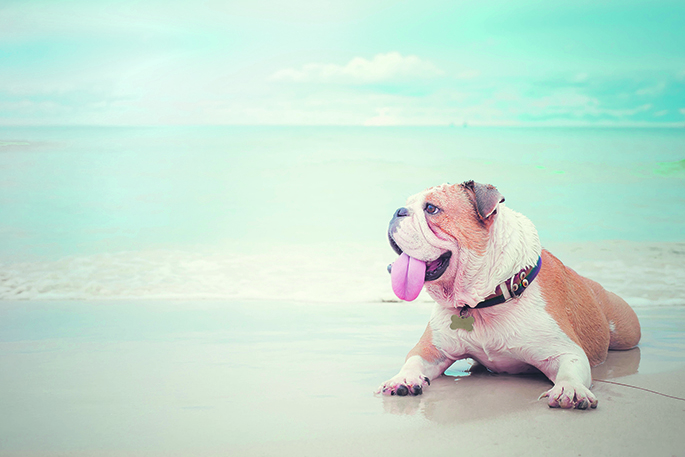Dogs can sniff out drugs, round up sheep, save people and run down criminals. They're multi-talented.
But they aren't very good at some of the really simple things, like keeping cool. And they need a hand from dog owners as the mercury creeps up into the 20s.
Every dog is different when coping with heat. Fat dogs, dogs with short or flat noses, long-haired breeds, young puppies, old dogs and unwell dogs struggle in the heat, so take extra care with them.
Dogs also respond differently to heat than people. For example, they sweat primarily through their feet, so attention to their paws is important.
Fill a child's paddling pool and encourage your dog to wallow around in it. Put ice cubes in an indoor bowl, and freeze a big block of ice for your dog's outdoor bowl. Doggie ice blocks are also a great way to give your dog a treat on a hot day and to keep your dog cool, just freeze their favourite treat in water in an ice-cream container.
Cooling mats are available at most pet stores, and they can be helpful for other animals too.
A normal dog's body temperature is around 38.5°C. Dogs only sweat a small amount through their paws and rely on panting to cool down. In a hot car, even with the windows slightly open, panting is not enough to keep a dog's body temperature within a safe range. A dog can withstand a body temperature of 41°C for a short amount of time but will quickly suffer irreparable brain damage and then death.
Don't ever leave a dog unattended in a car. If the purpose of your trip is not to take your dog somewhere, please leave them at home.
Animals, like people, can also suffer sunburn! Pets who are fair skinned or light haired are particularly susceptible and skin cancer is common with dogs and cats. Even though fur provides some sun protection, your pet needs a sunblock applied every three-to-four hours on areas of their body that have no, or little, hair covered spots.
The good news is you can buy pet-friendly sunscreen to rub on the tips of their ears, on the end of their nose and on their stomach – the most commonly sunburnt areas. Normal sunscreen ingredients include zinc oxide, which can be toxic to animals, so pet-friendly sunscreen is best.
Remember the three second rule. If the pavement's too hot for you, it's too hot for your pet! Check the temperature is safe by holding the back of your hand on the pavement for three seconds. If it's too hot to keep your hand there, then your pet shouldn't be out walking on it. They can burn their pads leaving them sore, blistered and red.
The highly infectious, and often fatal, canine parvovirus virus peaks in the spring and summer months so dog owners need to be extra vigilant.
Parvovirus is highly contagious and is transmitted from dog to dog. Symptoms include lethargy, severe vomiting and bloody diarrhea that results in life-threatening dehydration.
Make sure your dog is up-to-date on vaccinations, and make sure your puppy stays inside until they've had all of their shots. If you are unsure about anything, contact your vet.



0 comments
Leave a Comment
You must be logged in to make a comment.